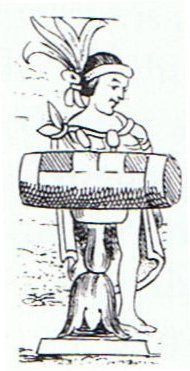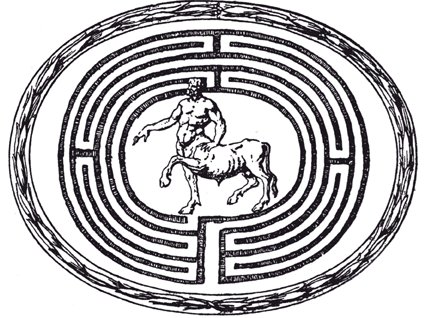1. Let's return to our investigation of the features associated with the end of the henua calendar. From Gb7-26 to Ga7-16 there seems to be ca 36 + 185 = 221 days, which is equal to the number of days from equinox to the heliacal rising of Toliman (as I have estimated it was around 72 years ago):
The basic glyph type at Toliman is not vaha mea, but hanau. Possibly this hanau is a reference to Rigel:
Rigel was (according to my reconstruction) rising heliacally in June 7, day 158 from January 1, and Toliman was rising in day 158 counted from May 24 (and Hyadum II). (And 158 = 314 / 2 + 1.) From Rigel to Toliman there are 221.2 - 78.1 = 143.1 days, and 143 + 221 = 364. Another name for Toliman was Rigel: ... Bailey's edition of Ulug Beg's catalogue gives it [α] as Rigil Kentaurus, from Al Rijl al Kentaurus, the Centaur's Foot; describing it as on the toe of the right front hoof, and Bayer so illustrated it. Chrysococca had the synonymous πουσ κοντουροσ; and our Century Dictionary retains Rigel, although this is better known for the bright star in Orion ... This fact rises several questions, for instance if the glyph type hanau is meant to show feet. Maybe the creator the G text knew Rigel was a name both for α Centauri and for β Orionis. We remember the peculiarity (Sign) of how only one leg was shown in the Mayan picture related to the wooden Pax drum:  ... The [tun] glyph is nearly the same as that for the month Pax ... except that the top part of the latter is split or divided by two curving lines. Brinton, without referring to the Pax glyph, identified the tun glyph as the drum called in Yucatec pax che (pax 'musical instrument'; che < *te 'wooden). Yucatec pax means 'broken, disappeared', and Quiche paxih means, among other things, 'split, divide, break, separate'. It would seem that the dividing lines on the Pax glyph may have been used as a semantic/phonetic determinative indicating that the drum should be read pax, not tun ... Thus, one may expect that this glyph was used elsewhere meaning 'to break' and possibly for 'medicine' (Yuc. pax, Tzel., Tzo. pox) ... (cfr at Toki) Incomplete was also the crown of Ariadne (a common name for Corona Borealis): ... Hyde quoted Kasat al Sālik, and Kas al Masākīn, the Pauper's Bowl, and the Persians had the same in their Kāsah Darwīshān, the Dervish's Platter, or Kāsah Shekesteh, the Broken Platter, because the circle [of the crown] is incomplete ... Allen (discussing the Centaurus constellation): "... Some ancient artists and mythologists changed these hind quarters to those of a bull, thus showing the Minotaur, and on the Euphrates it was considered a complete Bull ..."
"The Minotaur in the Labyrinth, engraving of a 16th-century gem in the Medici Collection in the Palazzo Strozzi, Florence." (Wikipedia) The G text can be compared to a maze, with endless twists and turns. If we measure from April 18 (day 108) to October 27 (day 300) then the distance is seen to be 192 days, equal to the probable number of glyph positions on the K tablet (with a text running in parallel with that of G). A part of the solar year is missing. In this maze in time we can presumably see the hind quarter of Taurus amalgamated with a Man in front. Given the power of the Bull his image ought to have resonated in autumn, but there with no sign of being harshly cut in half. The solar year begins in spring and is not interrupted in autumn. The summer 'year' was evidently ruled by the Bull, while the winter 'year' was ruled by Man. The (winter) thread of Ariadne saved Theseus: "... The Athenians asked for terms, and were required to sacrifice seven young men and seven maidens every seven or nine years to the Minotaur. One year, the sacrificial party included Theseus, the son of King Aegeus, who volunteered to come and kill the Minotaur. Ariadne fell in love at first sight, and helped him by giving him a sword and a ball of thread, so that he could find his way out of the Minotaur's labyrinth ..." (Wikipedia) ... At the end of June 1869 Bishop Jaussen on Tahiti received a gift from the inhabitants on Easter Island, in gratitude for having received the new faith from the missionaries. The gift was the rongorongo tablet now know as Tablette Échancrée, the first rongorongo tablet known outside of Easter Island. It was an important event, because it made Bishop Jaussen search for more such tablets, it set the ball rolling. The tablet in question was wrapped in a 16 meter long thread of braided human hair. I have reason to belive it was female hair, and I perceive the enwrapment to be a sign: The tablet had been made harmless by being enveloped (trapped) in female hair. Female hair is especially potent in neutralizing such powerful mana charges as those embodied in rongorongo tablets. The Bishop was protected. Hair grows predominantly at the back of the head, at the opposite side of the face (which is in front). When you go forward you face what lies ahead, while the back of your head, covered with hair, cannot see anything. Eyes are in front, hair at the back. The hairy back side is female in character and the front side with eyes is male ... | ||||||||||||||||||||||||||||||||||||||||||||||||||||||||||||||||||||||||||||||||||||||||||








